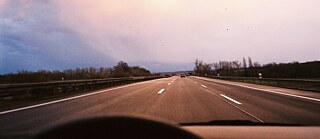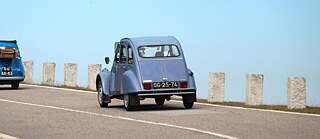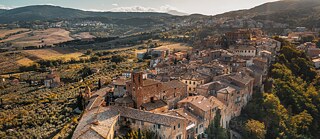Marta Krus A Journey Through Nothingness

Motorways are non-places, because no one ever spends time there. Yet – or perhaps precisely because of that – stories are written on them, one story for each car. An essay about a car journey from Poland to Germany, about leaving and arriving.
A non-place, according to Marc Augé, is a place that lacks three main things: identity, memory and history. A non-place has no historical value. It is characterised by its impermanence and transience. And the people who spend time there are anonymous and uprooted.The A11 motorway to Berlin, on which we were travelling, did not present us with any particular difficulties on that Friday morning in the winter of 1998. Admittedly our destination was still a long way off. First, we had to cross the border between Poland and Germany. Back then, Poland did not yet belong to the European Union and was not part of the Schengen area. The wait was brutal. Border checkpoints are places of enforced hiatus. They are points of transit, fragments of transformation, relocation and metamorphosis. The moment at which the car crosses the border is a mixture of deceleration, standstill and continued travel. It’s one of those windows in time in which the sense of identity hops between We and They. A moment at which inclusion or exclusion happens. Before you become immersed in the flow of the motorway again.
After almost two hours and an encounter with a grim-faced border guard, who challenged the condition of the tyres on the car laden high with the many objects from our former life, we were permitted to cross the border. We circumnavigated Berlin on the A10 and continued our journey on the A2 past Marienborn, the Memorial to Divided Germany. And while we drove past this symbol of non-freedom, division and hope in our little Fiat 126p, my sister and I received a quick history lesson from our mother. Jan Röhnert writes in Die Metaphorik der Autobahn (The Metaphor of the Highway): “The proverbial wall didn’t fall in Berlin first. The first place it fell was the transit motorway between Hanover and Berlin.”
Eclusive Non-Places
When you’re moving along the motorway, you’re not usually aware of the exclusivity of this place. Screened by acoustic barriers, inaccessible to pedestrians and cyclists, the motorway is an exclusive place that’s only open and navigable to those in motor vehicles with a maximum design speed of more than 60 km/h – as specified in the German Road Traffic Regulations Section 18 Para 1 (1). Our little Fiat could achieve a top speed of 100 km/h with its 25 HP. That made us fast enough for the motorway, but too slow for the hooting lorries behind us. According to the German Automobile Association ADAC, slow drivers are not permitted to obstruct traffic flow. We clearly felt that.What applies to the motorway also applies to the services there. They are exclusive non-places as well. They are only accessible to people arriving by car, bus or other fast vehicles. In return for this exclusivity, people in motorway rest areas have the security of existing within a familiar system, regardless of where they come from and where they are heading. The thing is, non-places are characterised by special guidance, consisting of recommendations (“keep right”), prohibitions (“no turning”), or information (“toilets”). The communication is generally limited to conveying information about the fuel pump number and payment method.
No Turning
Although the typical anonymity of non-places prevails at motorway services, people do sometimes encounter one another and have conversations there. For instance at a service station just before the Nordharz Triangle, the driver of a Toyota fitted with winter tyres marvelled over the driving capabilities of our little Fiat, which had carried us almost as far as Bad Harzburg despite the adverse winter weather conditions, with no plans to give up on the remaining 40 kilometres either. After the necessary stop-off at the services, back to the motorway we went.Seen through the windscreen, the motorway often looks like a line that only leads forwards. The destination is the future. Turning prohibited. When we set off on this grey December day from rainy Szczecin towards St. Andreasberg in the snow-covered Harz mountains, we were sure that we wouldn’t be in any hurry to return to Poland. The feeling of joy, but also of uncertainty, sparked by seeing the St. Andreasberg town sign drew its power from the fact that this was the first tangible evidence that we had arrived in a place, a new place, and we had left the non-places behind us.


